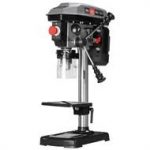Last Updated on April 29, 2021 by James
A pole saw is one of the most convenient and easy to use speciality tool you will ever come across but it also one of the most overlooked tools. Imagine using a ladder and chainsaws to cut or trim trees, when all you need is a well-maintained pole saw to take care of the high cutting.
Not only are they a safer cutting option but they will also save you money and time in the long run. You do not need a landscape gardener to tidy up your lawn or backyard, which can be an expensive business at times.
So how exactly does a pole saw operate? Basically, if you were to take a pole and attach it to the end of a saw you get a manual pole saw. Pole saws these days are well made and have a wide range of safety features so as to ensure that the user is protected while using it.
They are ideal for pruning lofty and dangerous branches which you will otherwise find difficult to reach.
Operation Guidance
One needs to keep the control measures in mind when working with a pole saw which would include emergency procedures and climate conditions as well. A pole saw can be at times difficult to control when at it full stretch. When you do not plan out well how to cut the tree in the right way, it could cause unnecessary damage to the tree.
This could either be some scar along the branches or a large flush cut or a wrongly angled branch collar pruning wounds. You could even risk yourself if you do not learn how to use it in a proper way. It is always easier to work on gravity in a downward motion rather than moving it sideways.
Imagine carrying a 10 kg machine above your head and if you do not know how to use it well, it could result in you ending up in an emergency room.
Along with these injuries, you could also damage the tree with incorrect pruning angles if you use a pole saw without proper training. However, despite all the risk factors it is a great asset for homeowners and professionals alike.
The earliest form of pole saws were nothing but a small chainsaw head which came with a brushcutter at the end of it and did not have any form of safety features or refinements. Even then the initial concept has not changed much, although the safety measures have now standardized.
The guide bar and the chain design have also refined as the guide bar now has a narrow nose and a gauge as well, which is combined with a reduced kickback chain. The drive shafts of the power unit is also user friendly and it helps to reduce vibration. The main drive shaft tube is, however, subjected to a certain degree of vibration.
You will even find some extraordinary support harnesses in the marker for the larger models which allows for full functionality. The design is similar to a rucksack and reduces the case of neck and shoulder strain for those using it for a prolonged period.
The maintenance of the bar and chain is the same as that of a conventional chainsaw, although you need to ensure that the chain tension file size is correct and you are filling the correct angles as per the recommendation of the manufacturer.
Pruning Tips
Here are a few tips to keep in mind when you are using a pole saw so as to ensure that you are using it correctly:
- A pole saw is not insulated but you need to have the correct training before using a machine that you will be using overhead. Also ensure you are careful about overhead power lines.
- Keep in mind any environmental restraints such as avoiding any nesting birds in your yard.
- Check the machine well before you start working with it and ensure that you have read the safety features well.
- If need be, wear some head, ear or eye protection or even gloves.
- It is also recommended that you maintain a safe working zone to at least 15 m around the machine when you are operating with it so that you do not cause any hindrance to by-passers.
- Ensure a firm footing and make sure that the worksite is also clean of any kind of fallen limbs or offcuts as you continue working with a pole saw.
- Before you start cutting or trimming the wood, assess the tension and compression in the wood so as to avoid the saw from being trapped.
- Plan one step a time when you are operating with it, and ensure that you reduce the weight of the branch as you gradually start cutting through the branches.
- First undercut the branch and make sure that when you cut the top, an overlap occurs so as to reduce the risk of tearing any bark.
- Whenever you operate with a pole saw, ensure that the machine is at an angle less than 60 degrees horizontally so as to reduce any injury of fallen timber.
- The final cut should always be on the outside edge of the branch collar.
Conclusion
The primary task of a pole saw is to remove lateral branches so don’t use it for any kind of menial task just because it has a saw with it. When a branch has an upright growth, it is not easy to make a correct pruning and that results in spear cuts.
So always compartmentalise the branches before cutting them, and you are good to go. Whether it is a manual pole saw or an engine-powered pole saw, be aware of your positioning and you will find efficiency while operating with it, without causing any damages.
